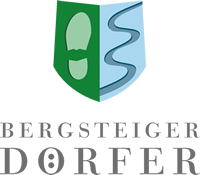Various archaeological sites prove that the Lower Engadin was already inhabited in the Bronze and Iron Ages, long before the Romans. Settlement sites were found near Ardez, Ramosch and Scuol. In Roman times, the Engadin was also used as a transit route. In the Middle Ages, the Counts of Tyrol owned possessions in the Lower Engadine, which they then donated to the Bishop of Chur. In the Swabian War of 1499, Austrian imperial lansquenets plundered and devastated all the Engadine villages. The Lower Engadine remained under Habsburg sovereignty until 1652
Lavin was a self-contained village from the 13th/14th century. The wall paintings in the church built around 1500 are of art-historical importance. The village was destroyed by Austrian troops in 1499 and 1622. The fact that Lavin’s appearance today differs significantly from that of other villages in the Lower Engadin has to do with a later event, the village fire of 1869. A conflagration and a chain of unfortunate coincidences – a defective telegraph, men at the livestock exhibition in Samedan – reduced the part of the village between the church and Lavinuoz to rubble. The rebuilding was not left to the people of Lavin, but was planned and carried out by the canton. So instead of the 68 houses that burnt down, only about half were rebuilt. And this reconstruction has left its mark on Lavin to this day. The canton not only determined the number of new houses to be built, but also the distance between them. This was set at 6.2 metres, the road width at 4.5 to 5 metres. Because the people of Lavin were also confectioners and many sought and found their fortune in Italy, the money, plans and builders came to a large extent from the south.Jürg Wirth
Only a few houses and the church of Guarda were spared in the Swabian War of 1499. Together with Lavin, Guarda introduced the Reformation in 1529. During the Second World War, Guarda was restored under the direction of the local architect Jachen Ulrich Könz. For the care of the old buildings and the
and the development of the village, Guarda was awarded the Wakker Prize of the
Swiss Heritage Society in 1975. The townscape of Guarda is of national importance. Jürg Wirth
Ardez was already inhabited by people in prehistoric times. For the first time
first mention of a place called “Ardezis” in a document from 842. At that time, there is also said to have been a Sust, a rest stop for travellers, near Ardez. The main source of income for the people of Ardez was agriculture and cattle breeding. Today, the majority work in the service sector, but there are still a dozen farms. It is also interesting to know that in earlier times the grazing areas of the Ardez farmers extended as far as the Paznaun valley in the Austrian Tyrol and that the Engadine delivered a lot of wood to the Tyrol until the middle of the 19th century. Ardez has always attached great importance to culture and good education for its population. It introduced a public school as early as 1776, followed by the founding of a secondary school in 1895. In 1975, Ardez was chosen as one of the four Swiss model villages as part of the European Year of Monument Preservation and Cultural Heritage.
Jürg Wirth

